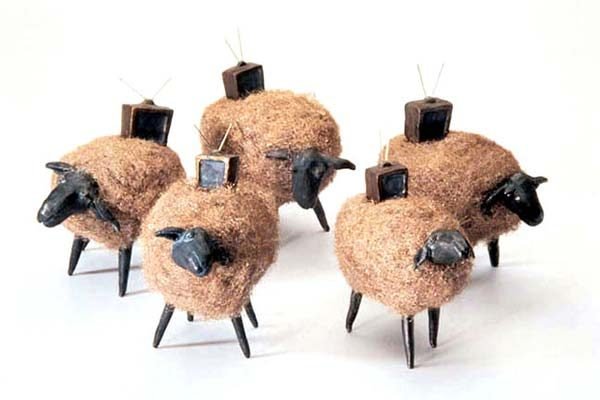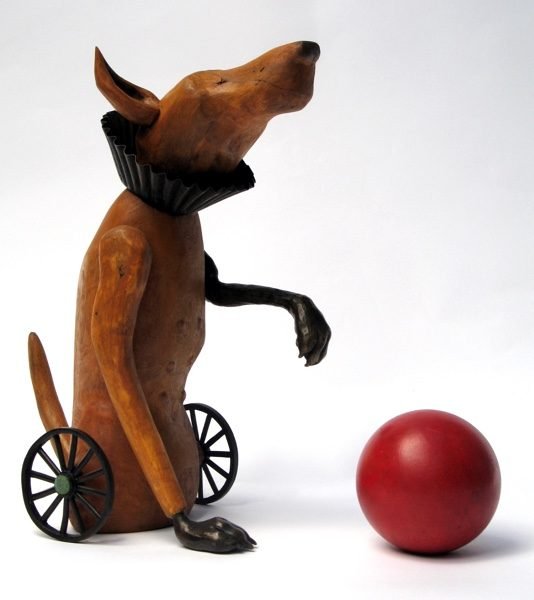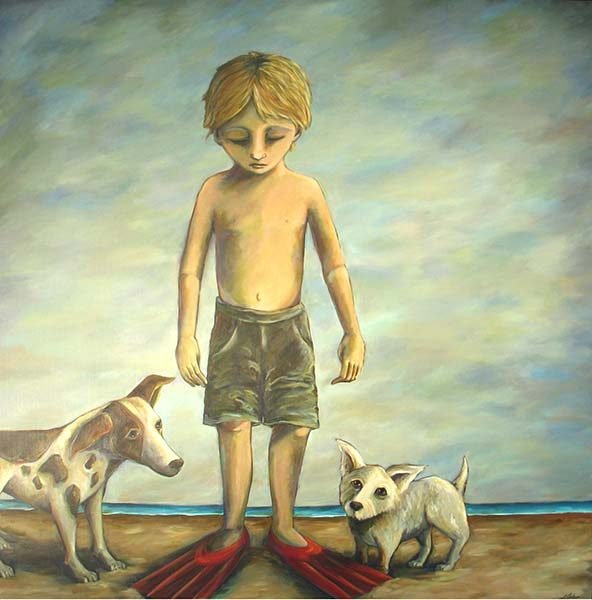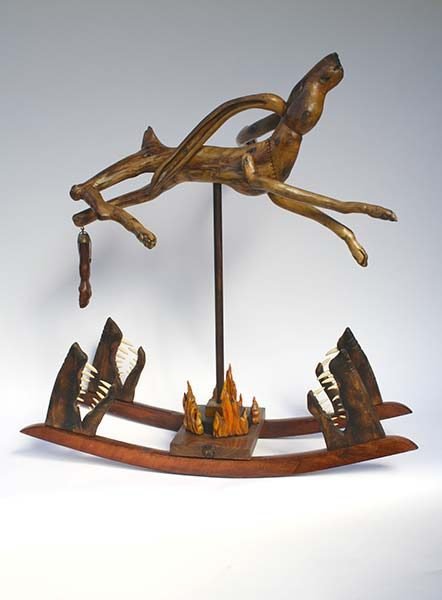For the past twenty-five years, Heather Gorham has been painting and making sculpture—for this artist, the one complements the other. The painter and sculptor uses a variety of mediums including acrylic, wood, resin, and bronze. Gorham’s figurative artwork revolves around the tangible interpretation of the everyday in which she creates—with a twist—a dreamy window into common experiences. She is a self-taught painter, who branched out into sculpture, studying the art of bronze casting under artists David Illes and Martin Delabano. Her painting and sculpture have been shown in galleries across the country including Santa Fe, Napa Valley, Los Angeles, and Austin. She is represented by the Craighead-Green Gallery in Dallas and the On Center Gallery in Provincetown, Mass. She lives and works in Dallas with her husband and two shaggy dogs. See her work featured in The Woven Tale Press Vol. VII #8.
Interview with Heather Gorham
By Jennifer Nelson, WTP Feature Writer
Nelson: What led you to pursue a career in the arts, and how did your childhood shape your decision to become an artist?
Gorham: I think I wanted to be an artist before I even really knew what an artist was. I began proclaiming that was what I wanted to grow up and be by around four or five years old. I’ve always made things, and that has always been my greatest pleasure. I attended an arts high school that had an amazing visual art department; the majority of the day was spent studying design, art history, or working in studio classes. I left there with a very broad education in materials and techniques that helped me to know that whatever I ended up doing, it would be in the creative field.
Nelson: Can you talk about the process of creating your sculptures, using natural products such as wood, bronze, and mixed media in such pieces as “Sheep in Wolves’ Clothing” and “Lost Dog, Found,” as well as how you decide what materials to use for which pieces?

Gorham: I generally see a piece in its entirety in my head first, then I’ll spend some time sketching to figure out how to build what I’m seeing and just feel for what the appropriate medium is to create what I see in my head. I get a sense of weight and color and texture when I’m considering what materials to use. I’m all over the place, using different metals, cast bronze, wood, ceramics, 3D printed work, and the occasional odd material like the bronze wool in “Sheep in Wolves’ Clothing.” The piece more or less tells me what it should be made of, which materials will help it come to life.
Nelson: What inspires you in your artwork, and which artists do you look to for guidance?
Gorham: Nature, animals and insects, dreams, overheard conversations, music, poetry, and random things that make me laugh are just some of the things that inspire me. I have my inspirational go-tos that have remained pretty consistent over the years, those things that seem to always be a base for my visual language. As far as artists for inspiration there is no shortage, especially with everything available on the internet to see. I’ve always been inspired by work that I can feel a story behind. Grant Wood, Max Ernst, Kiki Smith, Henry Moore, Martin Puryear, and so many more and again, all over the place. That’s for inspiration—you asked about guidance. For that I look to artists that have just done the work. No drama, no starving, just artists whose careers have been long and steady, work- a-day artists who create beautiful things and don’t make a fuss about it.

Nelson: How do you decide if a certain piece of artwork should be a painting or sculpture? And what themes do you present in each of these art forms?
Gorham: I usually know from the initial concept if it’s a painting or a piece of sculpture even though the ideas often mirror each other. The subject matter generally stays the same in both the sculpture and the painting, with some minor differences. I believe that I have probably done a 2D and a 3D version of just about everything in my “visual repertoire,” including birds, fish, dogs, men, women, trees, fire, water, and sheep. Occasionally an idea will switch and decide that it really is supposed to be realized in 3D or that it should be a painting, or a handful of times they have wanted to be both. That’s always a lot of fun and challenging, interpreting an idea into both mediums.

Nelson: In paintings such as “2 if By Sea” and “The Mortal Boy,” you explore human experiences, but you’ve made these common occurrences look strange. What techniques do you use to create these acrylic paintings, and what messages do you intend to convey to the viewer through this haunting and powerful artwork?
Gorham: I’m less interested in conveying a concrete message and more about leaving the viewer with a feeling. After all, the viewer brings at least half of the story to any artwork. There is beauty in the unpredictability of creating a different experience for every single person that sees it and having no control of that part.
Nelson: You are a self-made artist. Please describe the process it took to get to where you are now in your artwork.
Gorham: I decided in my mid-twenties that I was going to give fine art a try. I was lucky enough to have lost a go-nowhere job and see the gift in that. I spent some time developing my voice and a body of work and I literally hit the street. I researched every gallery that I thought my work would fit in at the time (this was 1992–93) and made a list in order of where I wanted to show. I researched and approached gallery spaces and submitted to so many juried shows (remember the internet was just made public way back then). I worked really hard! Within a few years I was showing at galleries in Santa Fe and Dallas and was working at it full time. I now work part time as a digital sculptor as well, but the stability and the scheduled demand of my time elsewhere helps me to appreciate and use my art making time to a better advantage.

Nelson: As a digital sculptor, you make toys, Bundt pans, and medical products. What are the rewards of this commercial artwork in which you use software to create and how does it inform your practice?
Gorham: I have had so much fun as a digital designer and sculptor. I have made prototypes from sketches on napkins for entrepreneurs, toys, housewares, and car parts. I’ve helped other artists to create their vision, and for a few years there I was probably the foremost expert in Bundt pan design anywhere. It was an honor, I assure you, that I never aspired to (not being a baker) but I now wear that crown with weird pride. You name it—I’ve sculpted all sorts of strange and random things. At this point I spent a majority of my digital time creating custom cranial implants for people that need them. I use a patient’s CT scans and help with surgical planning to create an implant for cases of trauma, brain tumors, and congenital defects—whatever reason that the skull has been damaged. That is a true gift—to be able to use the skills I have to actually tangibly help people, not that art doesn’t do that on its own. I am a believer that we need art, especially now. It can be a transformative experience, smoothing our collective brow and turn sorrow into beauty.
Nelson: How do you see your artwork evolving in the future?
Gorham: I would like to go bigger, experiment with more mediums, play as much as possible, and continue on doing the thing that has always been my greatest pleasure.
Copyright 2019 Woven Tale Press LLC. All Rights Reserved.

